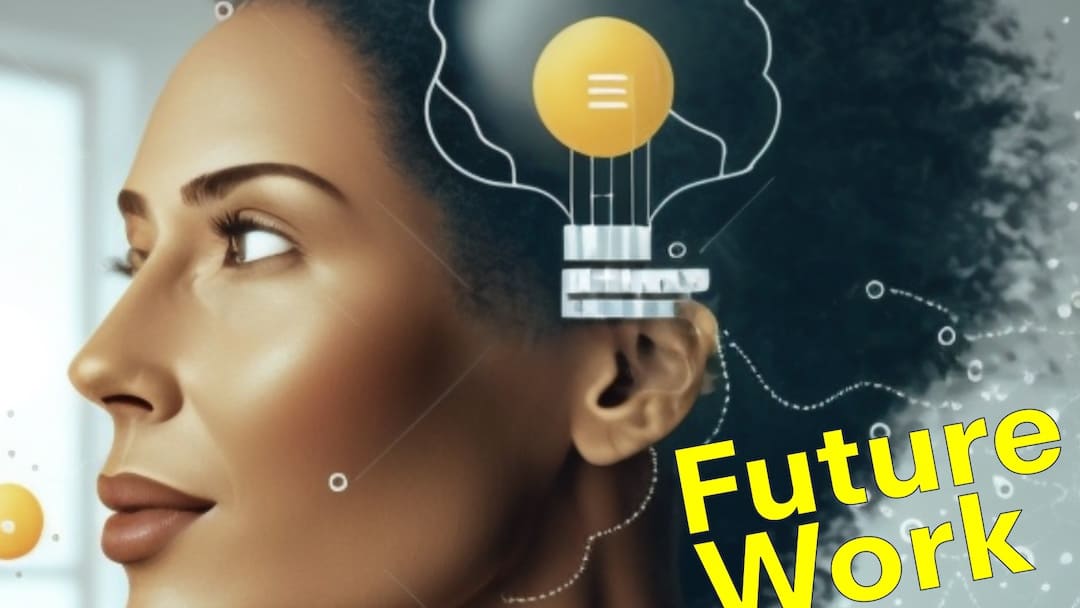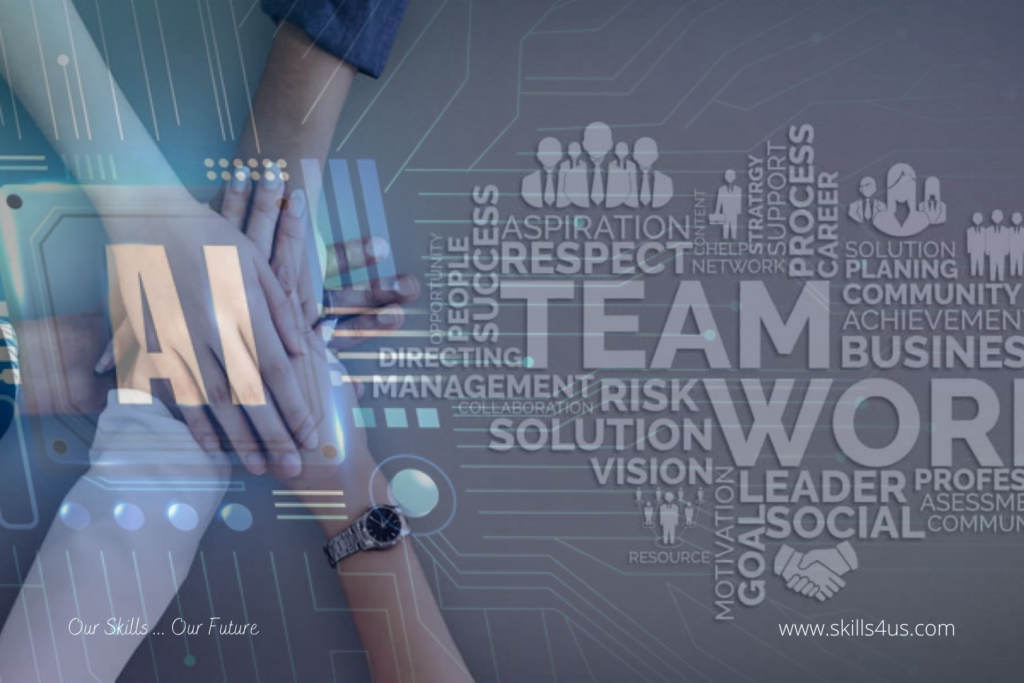AI solutions for remote team building and engagement are revolutionizing how distributed teams connect and collaborate. This innovative approach tackles the inherent challenges of geographical dispersion and communication barriers, fostering a sense of camaraderie and boosting overall engagement. By leveraging AI-powered tools, organizations can create more inclusive, efficient, and productive remote work environments, ultimately driving improved performance and employee satisfaction.
This exploration delves into the practical applications of AI in fostering remote team cohesion, from AI-driven communication platforms and virtual team-building activities to performance monitoring and personalized feedback mechanisms. We’ll examine the benefits, address potential privacy concerns, and look ahead to the future of AI in shaping the remote work landscape.
Understanding Remote Team Dynamics

Building strong, engaged remote teams presents unique challenges compared to their in-office counterparts. The lack of spontaneous interaction and the inherent difficulties in fostering a sense of community necessitate proactive strategies for building camaraderie and maintaining high levels of productivity and morale. Successfully navigating these challenges requires a deep understanding of the specific dynamics at play within a geographically dispersed workforce.Geographical dispersion and varying time zones significantly impact team cohesion.
The inability to easily convene for impromptu meetings or casual conversations limits the opportunities for informal bonding and knowledge sharing. Time zone differences can make scheduling meetings difficult, leading to fatigue and reduced participation from team members in less convenient time zones. This can also lead to communication delays and hinder the rapid response needed for urgent issues.
Consequently, a well-defined communication strategy is crucial to mitigate these issues and maintain consistent engagement across all team members.
Challenges in Building Camaraderie and Engagement in Remote Teams
The absence of physical proximity creates a significant hurdle in fostering a sense of community and belonging. Building rapport and trust, which are crucial for effective teamwork, relies heavily on informal interactions that are often naturally occurring in traditional office settings. These organic interactions are significantly reduced in remote environments, requiring deliberate efforts to create opportunities for social connection and team building.
For example, the lack of shared lunch breaks or spontaneous hallway conversations can impact the development of strong working relationships. This necessitates the implementation of structured activities and virtual events to compensate for this lack of casual interaction.
Impact of Geographical Dispersion and Time Zone Differences on Team Cohesion
Geographical dispersion and time zone differences present considerable logistical and communication challenges. Scheduling meetings that accommodate all team members’ time zones can be a complex undertaking, often leading to compromises that may not be ideal for everyone. This can result in meeting fatigue and reduced participation, particularly for those in less convenient time zones. Furthermore, the lack of immediate face-to-face communication can lead to misunderstandings and delays in project completion.
A well-structured communication plan, which might include asynchronous communication tools and clearly defined response times, is critical to mitigate these challenges and ensure efficient collaboration.
Common Communication Barriers and Strategies for Overcoming Them
Remote teams frequently encounter communication barriers that hinder effective collaboration. These barriers can stem from a variety of factors, including reliance on solely written communication, which lacks the nonverbal cues present in face-to-face interactions; technological limitations, such as unreliable internet connections or difficulties using specific collaboration tools; and differences in communication styles and preferences across team members. Strategies to overcome these barriers include leveraging a variety of communication channels (e.g., video conferencing, instant messaging, email) to suit different communication needs; providing comprehensive training on the use of collaborative tools; establishing clear communication protocols and expectations; and encouraging regular check-ins and feedback sessions to address any misunderstandings or concerns promptly.
For instance, implementing a system of daily stand-up meetings via video conferencing can significantly improve communication flow and transparency.
AI-Powered Tools for Enhanced Communication

Effective communication is the cornerstone of any successful remote team. AI-powered tools are revolutionizing how remote teams collaborate, fostering seamless communication and boosting overall productivity. These tools leverage advanced algorithms to automate tasks, analyze data, and personalize the communication experience, ultimately leading to improved team dynamics and increased efficiency.
AI-Driven Communication Platforms
Several AI-driven platforms are designed to facilitate seamless collaboration among geographically dispersed team members. These platforms offer a range of features, from intelligent message routing to real-time translation, significantly enhancing communication clarity and efficiency. The following table highlights some key examples:
| Platform Name | Key Features | Pricing Model | User Reviews Summary |
|---|---|---|---|
| Microsoft Teams | Real-time chat, video conferencing, file sharing, integrated apps, AI-powered transcription and translation. | Subscription-based, various plans available. | Generally positive, praised for its integration with other Microsoft products and robust features. Some users report occasional glitches. |
| Slack | Team chat, channels for organized communication, file sharing, integrations with various apps, AI-powered search and suggestions. | Freemium model, paid plans offer increased storage and features. | Highly rated for its user-friendly interface and extensive app integrations. Some users find the free plan limiting. |
| Google Chat | Real-time chat, video conferencing, file sharing, integration with Google Workspace, AI-powered smart replies and suggestions. | Included in Google Workspace subscriptions. | Generally positive, appreciated for its seamless integration with other Google services. Some users prefer Slack’s features. |
| Zoom | Video conferencing, screen sharing, chat, recording, AI-powered transcription and background noise reduction. | Freemium model, paid plans offer increased meeting duration and participants. | Widely used and popular, praised for its reliability and ease of use. Some users report concerns about security in the past. |
Comparison of AI-Powered Tools for Project Management
Various AI-powered tools are available for scheduling meetings, managing projects, and tracking progress. The choice of tool depends on the specific needs of the team and the complexity of the projects.A comparison of these tools reveals significant differences in their functionalities and strengths. For example, some excel at scheduling and calendar management, while others focus on task management and progress tracking.
The selection should be based on the team’s priorities and workflow.
- Scheduling and Calendar Management: Tools like x.ai and Calendly leverage AI to automate meeting scheduling, considering participants’ availability and preferences. They offer significant time savings compared to manual scheduling.
- Project Management and Task Tracking: Platforms like Asana and Monday.com integrate AI to provide insights into project progress, identify potential bottlenecks, and suggest optimizations. This proactive approach helps teams stay on track and deliver projects on time.
- Progress Tracking and Reporting: AI-powered project management tools often offer automated progress reports and dashboards, providing real-time visibility into project status and enabling data-driven decision-making.
AI-Powered Chatbots for Streamlined Communication
AI-powered chatbots are transforming internal communication by automating routine tasks and providing instant support. These chatbots can answer frequently asked questions, provide access to internal documents, and handle simple requests, freeing up human team members to focus on more complex and strategic tasks. This automation not only improves efficiency but also enhances employee satisfaction by reducing the burden of repetitive tasks.
For instance, a chatbot could be programmed to answer common HR questions, provide IT support, or update employees on company news. This ensures consistent and readily available information, improving the overall communication flow and reducing the need for human intervention in routine matters.
Leveraging AI for Team Building Activities: AI Solutions For Remote Team Building And Engagement

AI offers transformative potential for enhancing remote team building, moving beyond simple video calls to create engaging, inclusive, and personalized experiences. By leveraging AI’s capabilities in personalization, data analysis, and automated facilitation, organizations can foster stronger team bonds and improve overall collaboration in distributed work environments. This section explores how AI can be effectively integrated into virtual team-building activities.AI-powered tools can significantly improve the design and execution of virtual team-building activities, promoting inclusivity and fostering deeper engagement among diverse team members.
This is achieved through personalized experiences, real-time feedback, and data-driven insights that allow for continuous improvement and optimization of team dynamics.
AI-Facilitated Virtual Team-Building Activities
A series of virtual team-building activities facilitated by AI can be designed to cater to diverse preferences and skill sets. These activities should prioritize inclusivity and avoid creating barriers for participants with varying levels of technological proficiency or comfort with virtual environments. For example, an AI could curate a selection of activities based on team member profiles, ensuring a balanced mix of collaborative, creative, and problem-solving challenges.
It could also dynamically adjust the difficulty level of activities based on team performance, maintaining engagement without causing frustration. This adaptive approach ensures that all team members feel challenged and valued, regardless of their background or experience. Examples include AI-powered escape rooms that adjust puzzles based on team progress, or collaborative storytelling games where AI provides prompts and suggestions based on the evolving narrative.
AI-Driven Personalization of Team-Building Experiences
AI can personalize team-building experiences by analyzing individual preferences and learning styles. This involves leveraging data from various sources, such as employee profiles, performance reviews, and past activity participation. For instance, an AI could identify individuals who prefer competitive activities and match them with team members who share similar preferences. Conversely, it could pair individuals who prefer collaborative tasks with others who complement their skills.
AI could also tailor the format and delivery of activities to accommodate different learning styles. For example, visual learners could receive more visual aids and interactive simulations, while auditory learners could benefit from audio-based activities and discussions. This level of personalization ensures that every team member feels seen, heard, and valued, leading to greater engagement and satisfaction.
AI-Powered Real-Time Feedback and Analytics
AI can provide real-time feedback and analytics on team dynamics during virtual activities. This can be achieved through sentiment analysis of text and voice communications, observation of participant interactions, and analysis of activity completion times and performance metrics. For instance, an AI could detect if a team member is disengaged or struggling during a collaborative task and provide personalized suggestions or support.
It could also identify communication bottlenecks or conflicts within the team and offer strategies for improvement. This real-time feedback allows for immediate adjustments to activities and communication styles, ensuring a more productive and positive team-building experience. Further, post-activity analytics can provide valuable insights into team dynamics, communication patterns, and individual performance, which can inform future team-building initiatives and leadership strategies.
For example, an AI could identify individuals who consistently contribute insightful ideas or demonstrate strong leadership qualities, providing valuable information for talent management and career development.
AI-Driven Performance Monitoring and Recognition
Effective remote team management hinges on accurate performance assessment and timely recognition. AI offers a powerful solution, moving beyond subjective evaluations to provide objective insights into individual and team contributions, fostering a culture of transparency and meritocracy. By analyzing vast datasets, AI systems can identify top performers, pinpoint areas for improvement, and personalize development strategies, ultimately boosting overall team productivity and engagement.AI systems can track a range of objective performance metrics, providing a comprehensive view of individual and team contributions.
This goes beyond simple output counts; AI can analyze communication patterns, collaboration effectiveness, and project completion times to create a holistic performance picture. For instance, an AI system could track the number of completed tasks, the speed of task completion, the quality of deliverables (as assessed through automated checks or peer reviews), and the frequency and effectiveness of communication within project teams.
This multifaceted approach ensures a fairer and more accurate evaluation than traditional methods reliant on manager observation alone.
Objective Performance Metric Tracking
The foundation of AI-driven performance monitoring lies in the meticulous tracking of objective metrics. This involves integrating various data sources, including project management software, communication platforms (like Slack or Microsoft Teams), and code repositories (for software development teams). AI algorithms then process this data, identifying patterns and correlations to generate insightful performance reports. For example, an AI system could analyze the frequency and quality of code commits to assess the performance of software developers, or track response times and resolution rates to evaluate the effectiveness of a customer support team.
The system could also identify bottlenecks in workflows or communication channels, providing actionable insights for process improvement. This data-driven approach minimizes bias and ensures a fair assessment of individual and team performance.
Identifying High-Performing Team Members and Providing Recognition
Once objective performance data is collected and analyzed, AI can identify high-performing individuals and teams. This identification goes beyond simple ranking; AI can analyze the factors contributing to high performance, highlighting specific strengths and skills. This information can then be used to tailor recognition and rewards programs. For example, an AI system could identify a team member consistently exceeding project deadlines while maintaining high quality of work, suggesting a bonus or promotion.
Similarly, it could recognize a team that collaboratively solved a complex problem, suggesting a team-based reward or public acknowledgment. This approach fosters a culture of appreciation and motivates employees to continue performing at their best.
AI-Powered Performance Analysis and Personalized Coaching
AI’s analytical capabilities extend beyond performance recognition; it can also identify areas for improvement. By analyzing performance data, AI can pinpoint specific weaknesses or challenges hindering individual or team performance. This detailed analysis enables personalized coaching and development opportunities. For example, if the AI identifies a consistent delay in task completion for a particular team member, it might suggest additional training on time management techniques.
Or, if the AI detects a lack of collaboration within a specific team, it might recommend team-building activities or communication skills training. This personalized approach ensures that development efforts are targeted and effective, maximizing the impact of coaching and training initiatives.
Addressing Privacy and Security Concerns

The integration of AI into remote team building and engagement presents significant opportunities, but it also introduces potential privacy and security risks that must be carefully addressed. Failing to do so can lead to legal repercussions, damage to employee trust, and reputational harm for the organization. A proactive and comprehensive approach is crucial to mitigate these risks and ensure ethical and responsible use of AI in the workplace.The use of AI-powered tools for remote team building and engagement involves the collection and processing of sensitive employee data, including communication content, performance metrics, and potentially even biometric data depending on the specific tools employed.
This data is vulnerable to various threats, from unauthorized access and data breaches to misuse and discriminatory outcomes. Furthermore, the opacity of some AI algorithms can make it difficult to understand how decisions are made, raising concerns about fairness and transparency.
Data Security Measures for AI-Powered Tools
Robust data security measures are paramount. This includes implementing strong access controls, encryption both in transit and at rest, and regular security audits to identify and address vulnerabilities. Data minimization principles should be followed, collecting only the data necessary for the intended purpose and retaining it only for as long as required. Regular employee training on data security best practices is also crucial to fostering a culture of security awareness.
Consider implementing multi-factor authentication and regularly updating software and security protocols. For example, using end-to-end encryption for communication platforms ensures that only the sender and receiver can access the message content, preventing unauthorized interception.
Compliance with Data Protection Regulations
Organizations must ensure full compliance with relevant data protection regulations such as GDPR (General Data Protection Regulation) in Europe and CCPA (California Consumer Privacy Act) in California. This involves implementing mechanisms for data subject access requests, providing transparency about data collection and processing practices, and obtaining appropriate consent from employees. A comprehensive data protection impact assessment should be conducted before deploying any AI-powered tool to identify and mitigate potential risks.
Regular audits should be performed to ensure ongoing compliance. Failure to comply can result in significant fines and legal action.
Ethical Considerations of AI-Driven Performance Monitoring
The use of AI to monitor employee performance and engagement raises ethical concerns regarding surveillance and potential bias. Algorithms trained on biased data can perpetuate and amplify existing inequalities, leading to unfair or discriminatory outcomes. Transparency and explainability are crucial to ensure fairness and prevent misuse. Employees should be informed about how AI is being used to monitor their performance and have the opportunity to challenge any decisions made based on AI-generated insights.
Establishing clear guidelines and oversight mechanisms to prevent bias and ensure accountability is essential. For instance, regularly reviewing the algorithms used for performance monitoring to identify and correct biases is crucial to ensure fairness and prevent discriminatory outcomes. This might involve using diverse datasets for training the algorithms and involving human oversight in the interpretation of the AI-generated results.
Future Trends in AI for Remote Team Management
The integration of artificial intelligence (AI) into remote work is rapidly evolving, promising significant advancements in team collaboration and engagement. Future trends suggest a move beyond basic communication tools towards more sophisticated AI systems capable of proactively addressing team needs and predicting potential challenges. This will lead to more efficient, productive, and ultimately, more satisfying remote work experiences.AI’s role in enhancing remote team dynamics will be increasingly defined by its ability to understand and respond to nuanced human interactions.
Advancements in natural language processing (NLP) and machine learning (ML) will be crucial in achieving this. These technologies will power more sophisticated tools capable of analyzing team communication patterns, identifying potential conflicts, and suggesting proactive solutions. This proactive approach, rather than a reactive one, will be a key differentiator in the future of AI-powered remote team management.
Enhanced Predictive Analytics for Team Performance
AI algorithms will become increasingly adept at predicting team performance based on various data points, including communication patterns, individual work habits, and project timelines. This predictive capability will enable managers to proactively address potential bottlenecks, allocate resources effectively, and prevent project delays. For example, an AI system could analyze communication data to identify teams at risk of conflict due to poor communication or misaligned goals, allowing for timely intervention and conflict resolution.
This predictive approach moves beyond simple monitoring to a proactive management strategy.
AI-Driven Personalized Learning and Development
AI will play a more significant role in personalizing employee learning and development within remote teams. By analyzing individual performance data and learning styles, AI-powered platforms can curate tailored training programs and resources, maximizing individual growth and contributing to overall team effectiveness. Imagine a system that automatically suggests relevant online courses or mentorship opportunities based on an employee’s skill gaps and career aspirations, fostering a culture of continuous learning within the remote workforce.
This personalized approach boosts employee engagement and retention.
Hyper-Personalized Communication and Collaboration Tools
Future AI-powered tools will go beyond basic communication platforms to offer hyper-personalized experiences. These tools will leverage NLP and ML to understand individual communication preferences and automatically adapt to different team members’ needs. For instance, an AI-powered communication platform might automatically summarize lengthy email threads, translate messages in real-time, or prioritize urgent messages based on individual workload and deadlines.
This level of personalization fosters smoother, more efficient communication and reduces cognitive overload.
AI-Powered Virtual Team Building and Engagement
AI will significantly enhance virtual team building activities by creating more engaging and interactive experiences. AI-powered virtual reality (VR) and augmented reality (AR) tools will facilitate immersive team-building exercises and simulations, fostering stronger relationships and improving collaboration. For example, a virtual escape room powered by AI could adapt its difficulty level based on the team’s performance, providing a challenging yet achievable experience that enhances team cohesion.
This dynamic adaptation makes virtual team building more effective and enjoyable.
Addressing Ethical and Privacy Concerns in AI-Driven Remote Work, AI solutions for remote team building and engagement
The increasing integration of AI in remote work environments necessitates careful consideration of ethical and privacy implications. Transparency and data security will be paramount. Organizations will need to implement robust data protection measures and ensure that AI systems are used responsibly and ethically, respecting employee privacy and avoiding biases in algorithmic decision-making. Establishing clear guidelines and regulations for the use of AI in remote work will be crucial in building trust and ensuring responsible innovation.
This proactive approach to ethical considerations is vital for successful AI integration.
Last Word

In conclusion, the integration of AI solutions offers a powerful pathway to building stronger, more engaged remote teams. By thoughtfully implementing AI-powered tools and strategies, organizations can overcome the unique challenges of remote work, cultivate a thriving team culture, and unlock significant improvements in productivity and employee well-being. The future of remote work is undeniably intertwined with AI, promising a more connected, efficient, and fulfilling experience for everyone involved.

